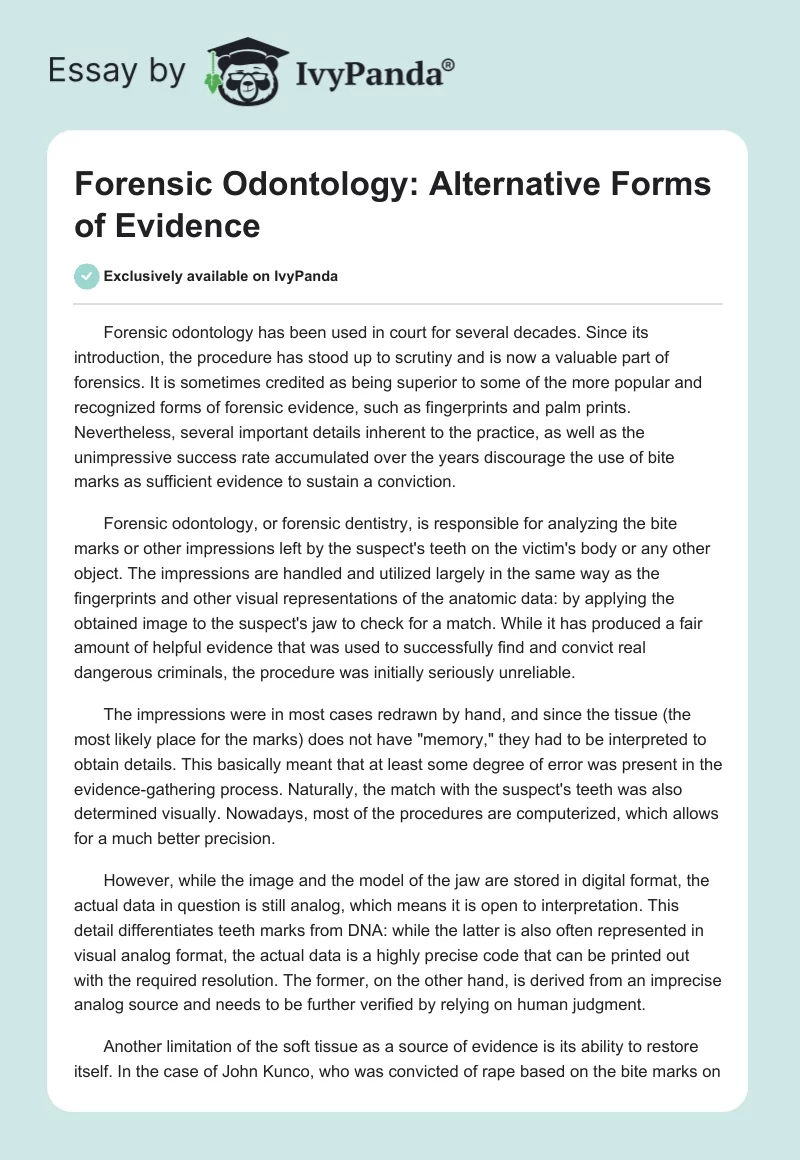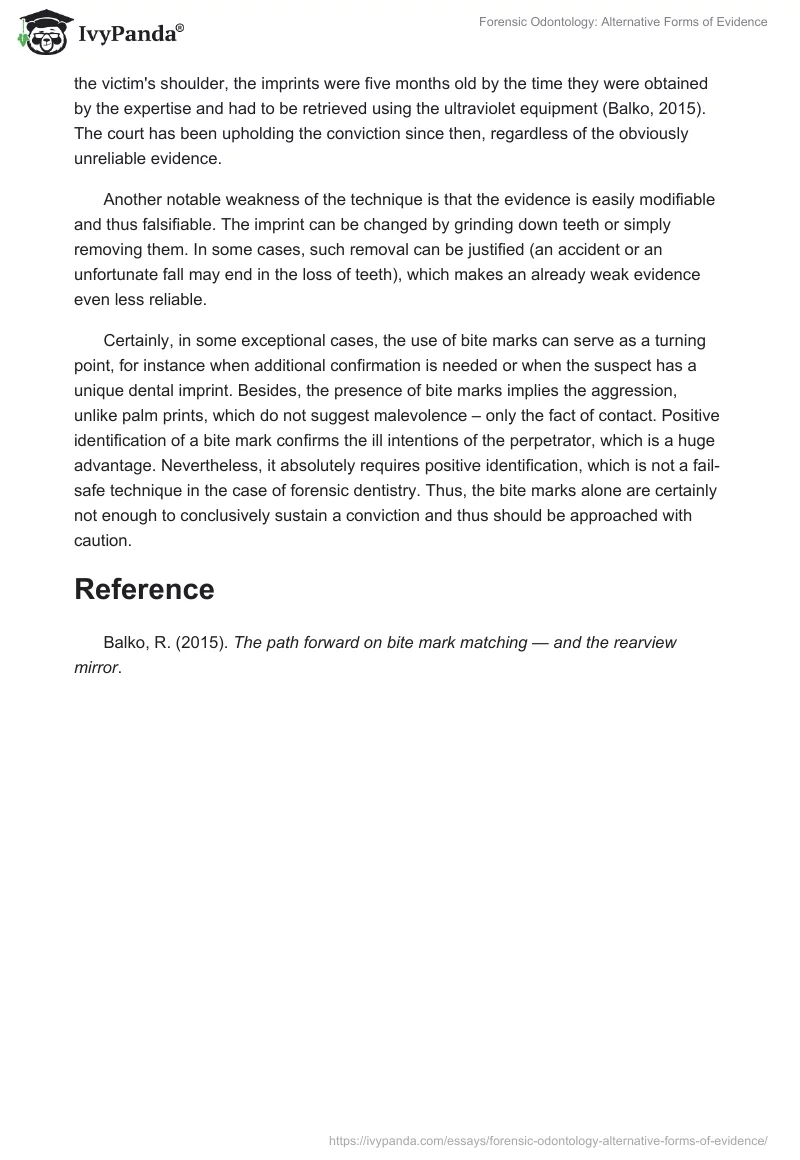Forensic odontology has been used in court for several decades. Since its introduction, the procedure has stood up to scrutiny and is now a valuable part of forensics. It is sometimes credited as being superior to some of the more popular and recognized forms of forensic evidence, such as fingerprints and palm prints. Nevertheless, several important details inherent to the practice, as well as the unimpressive success rate accumulated over the years discourage the use of bite marks as sufficient evidence to sustain a conviction.
Forensic odontology, or forensic dentistry, is responsible for analyzing the bite marks or other impressions left by the suspect’s teeth on the victim’s body or any other object. The impressions are handled and utilized largely in the same way as the fingerprints and other visual representations of the anatomic data: by applying the obtained image to the suspect’s jaw to check for a match. While it has produced a fair amount of helpful evidence that was used to successfully find and convict real dangerous criminals, the procedure was initially seriously unreliable.
The impressions were in most cases redrawn by hand, and since the tissue (the most likely place for the marks) does not have “memory,” they had to be interpreted to obtain details. This basically meant that at least some degree of error was present in the evidence-gathering process. Naturally, the match with the suspect’s teeth was also determined visually. Nowadays, most of the procedures are computerized, which allows for a much better precision.
However, while the image and the model of the jaw are stored in digital format, the actual data in question is still analog, which means it is open to interpretation. This detail differentiates teeth marks from DNA: while the latter is also often represented in visual analog format, the actual data is a highly precise code that can be printed out with the required resolution. The former, on the other hand, is derived from an imprecise analog source and needs to be further verified by relying on human judgment.
Another limitation of the soft tissue as a source of evidence is its ability to restore itself. In the case of John Kunco, who was convicted of rape based on the bite marks on the victim’s shoulder, the imprints were five months old by the time they were obtained by the expertise and had to be retrieved using the ultraviolet equipment (Balko, 2015). The court has been upholding the conviction since then, regardless of the obviously unreliable evidence.
Another notable weakness of the technique is that the evidence is easily modifiable and thus falsifiable. The imprint can be changed by grinding down teeth or simply removing them. In some cases, such removal can be justified (an accident or an unfortunate fall may end in the loss of teeth), which makes an already weak evidence even less reliable.
Certainly, in some exceptional cases, the use of bite marks can serve as a turning point, for instance when additional confirmation is needed or when the suspect has a unique dental imprint. Besides, the presence of bite marks implies the aggression, unlike palm prints, which do not suggest malevolence – only the fact of contact. Positive identification of a bite mark confirms the ill intentions of the perpetrator, which is a huge advantage. Nevertheless, it absolutely requires positive identification, which is not a fail-safe technique in the case of forensic dentistry. Thus, the bite marks alone are certainly not enough to conclusively sustain a conviction and thus should be approached with caution.
Reference
Balko, R. (2015). The path forward on bite mark matching — and the rearview mirror.


